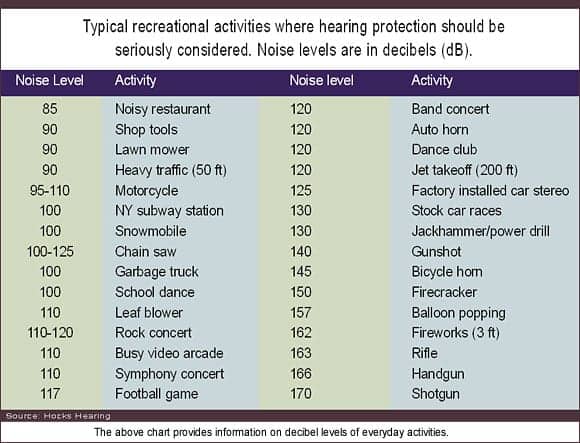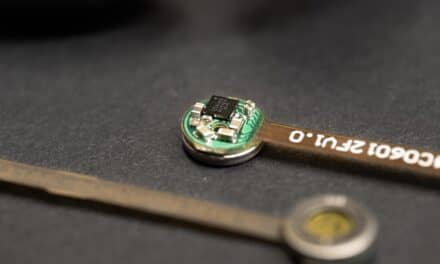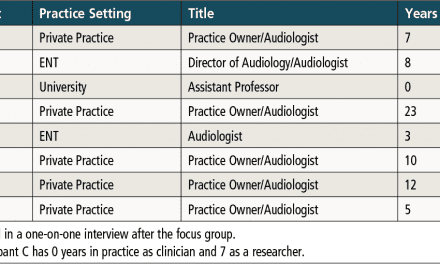A roundtable panel discusses hearing protection awareness and state-of-the-art advances within the hearing industry.
Audiologists focused solely on restoration of lost hearing may be missing a golden opportunity for practice growth by not also offering services and products oriented around prevention of hearing loss, some observers assert. Indeed, audiologists are uniquely positioned to offer the nation’s multiplied millions of at-risk adults and children the help needed to avoid damage to their ears, those profession-watchers say.
Hearing Products Report has gathered several such observers—movers and shakers of the hearing-protection industry, actually—to discuss the role audiologists and others involved in the dispensing of hearing aids can and should play in preventing hearing loss. As well, we invited them to share their views about what constitutes state of the art in noise-attenuation technology.
Our roundtable participants are:
Lee Heidenreich, account and purchasing manager, and Kathy Palmersten, account manager, both from Minneapolis-based Warner Tech-care Products Inc, a broad-line distributor with more than a decade’s worth of experience providing impression materials, tools, diagnostic products, infection control products, assistive listening devices, and, now, hearing protection products to audiologists, hearing instrument specialists, and manufacturers.
Dan Hocks, Sr, president of family-owned Hocks Hearing Healthcare Products in Portland, Ore. The company operates a full-service earmold laboratory—site of production of Hocks Noise Brakers®. Among the high-level users of the company’s hearing protection products are members of law enforcement and the armed forces, professional athletes, musicians—even a show horse. Dan Hocks has been in the business 40 years.
Rich Anesko, MS, CCC-A, staff audiologist with Westone Labs Inc, Colorado Springs, Colo. Westone is among the world’s largest manufacturers of custom-made products for the ear. Numbering in the thousands, these products include earmold designs for the hearing impaired as well as those for hearing protection and communications. Westone also is known as a rich source of technical counsel, ideas, and assistance for professionals and consumers alike.
HPR How would you grade audiologists for their efforts at developing hearing protection as a viable piece of their practices?
Hocks Most of them deserve a grade of D.
HPR That is pretty harsh, don’t you think?
Hocks I have actually been told by audiologists things like, “I don’t care about hearing protection—I make money selling hearing aids.” But I understand where they are coming from on this. At first blush, hearing protection seems counterproductive to anyone making a living selling hearing aids. But the future of the hearing industry is virtually guaranteed. And that’s precisely why they should look into hearing protection, a largely untapped market just waiting to be developed. There are about 30 million workers exposed to hazardous noise on a regular basis, and another 135 million adults and children at-risk. For the audiologist, that is a ready-made market.
HPR Then why are they not rushing into it?
Hocks The problem is the profit margin isn’t as high as with hearing aids.
Anesko I think audiologists are getting better at this.
HPR How so?
Anesko They are making themselves more aware of the available products. They are educating themselves through Web site information, by reading brochures and other literature from manufacturers, by attending trade shows, and by various other means. But, still, I have to agree that they need to be even more proactive in educating themselves and thinking “outside the box.”
HPR How would you advise audiologists to “break into” hearing protection?
Hocks Offering education is the best approach for the hearing professional. Become the local expert and research every product used in hearing protection. The professional who builds a reputation on hearing protection will have instant credibility when it comes to “who should I see for a hearing aid?”.
HPR What should manufacturers themselves be doing to help audiologists better understand the opportunities for greater practice success that await them in the hearing protection segment?
Anesko Provide as much marketing support materials as possible—flyers and brochures, for example. Manufacturers should also provide on their Web site current information about trends in hearing protection. And present that information to audiologists in the journals they read.
HPR Consumers tend to associate hearing protection products with a very limited range of applications. Beyond use in concerts and at raceways, what are some of the applications for which consumers could and should be using hearing protection products, but somehow are not as aware of as they might be?
Heidenreich Many common activities that consumers unthinkingly participate in may actually be harmful without proper hearing protection. There are dangers to hearing health associated with participation in school bands, doing a home remodeling project, riding motorcycles, engaging in agricultural activities, hunting, and using a cell phone or any kind of personal listening device.
Hocks Anything beyond 85 dB is a potential danger to hearing health. Situations where noise above 85 dB are likely to be encountered would include crowded restaurants, walking along a street and being 50 feet away from heavy traffic, using a power mower to cut the grass in your yard or a leaf blower to clean up the trimmings, standing near a subway, being in proximity to a garbage truck making a pickup, spending any amount of time in a packed video arcade, or attending a symphony concert. I was fortunate to go to the Super Bowl this year, but the noise level almost ruined it—the halftime show with the Rolling Stones had me covering my ears because it was actually painful. Yes, you guessed it—I forgot to take my earplugs.
HPR What level of consumer acceptance is there for hearing protection products?
Anesko Acceptance is good, as long as the topic of hearing protection is presented by an educated, well-informed, and experienced professional.
Hocks Lack of awareness and education is the main reason people don’t use hearing protection.
HPR Of course, even when educated, some consumers still say thanks, but no thanks. What are some of the common objections you are hit with?
Hocks They complain about feeling plugged up or have fears that they’ll injure their ear by wearing hearing protection. The biggest complaint is that use of hearing protection prevents them from hearing other people, hearing the machines they’re operating, and hearing warnings.
HPR Any thoughts as to how those objections might be overcome?
Heidenreich Better comfort can be achieved by moving from a standard foam plug to something custom-made, either as an instant earmold material or as a lab-designed earmold.
Anesko Consumers just want to be sure they are getting the appropriate product for their needs and that the quality is up to standard.
HPR What can product makers and audiologists, either separately or together, do to foster broader and deeper acceptance among consumers?
Anesko They need to participate in public health fairs, they need to set up booths at motorsports races and other events that are noisy and where crowds gather. They need to use those occasions to distribute flyers and other types of information pieces designed to educate the consumer and promote awareness.
Heidenreich Consumers need to understand that by using custom-fit earplugs and snugger-fitting earphones, they can drastically reduce the risk associated with this type of activity.
HPR With regard to things your own organization may have tried in the past, what kinds of awareness-generating and acceptance-building campaigns seem to work best?
Anesko We, as a manufacturer, provide many different marketing materials and our Web site is very informative. We also provide complimentary earplugs for audiologists and dispensers to use as demos and pass on the wearing experience to their patients. And we maintain a high-visibility presence at trade shows and conventions.
Palmersten Having a varied supply of hearing protection products in a catalog makes it easier for the hearing health professional to suggest and supply products to their patients and patient family members. With that in mind, our company will be publishing in the next month or two a new edition of our broad-line catalog that will feature one entire section dedicated to hearing protection products.

HPR What would you say now represents the state of the art in hearing protection?
Anesko First and foremost, musician flat-response earmolds. These use Etymotic Research filters to provide true high-fidelity attenuation coupled with a custom-fit earmold. Next in line would be motorcycle and racing helmet headsets. These have built-in electronics but also provide hearing protection. Then, of course, there are the various military applications.
Hocks Most over-the-counter earplugs are made from expandable foam, plastic rubber, or silicone, but I’m convinced that the most effective personal hearing protection is provided through custom-made earmolds. I say that because the custom products are an exact reverse of the individual ear and, as such, they fit every crevice and groove of the ear, so they are understandably the most comfortable and provide the best seal possible. And, because they are custom-made, they can be modified for almost any application or reason. As to technology, our own Noise Braker product is what I’d consider state of the art. It’s based on the “accelerated resonant decay” principle of physics, which basically means we convert excessive noise or sonic energy into heat or thermal energy by a series of restrictive chambers, creating compression acceleration and thereby causing the excessive noise to neutralize itself.
HPR What do you believe, predict, or hope is in the research-and-development pipeline for the next generation of hearing protection technology?
Anesko Better ear-level protection for our military service people that would allow them to hear accurately yet receive protection in high-noise, high-impact situations. Hopefully, this type of hearing protection will have crossover potential and become available to the civilian population as well.
Hocks Better noise-deadening materials are being developed. Dissimilar materials cured in layers have also shown promise. Electronic noise-canceling devices show promise, but they will be too expensive for mass usage. They can, however, be very beneficial to workers with hearing loss since some can amplify outside sounds when it is quiet but still control noise that reaches the ear. When all is said and done, I think the industry is doing the best it can in providing a wide selection of earplugs and earmuffs for almost all hazardous noise levels.
Rich Smith is a contributing writer for Hearing Products Report.





